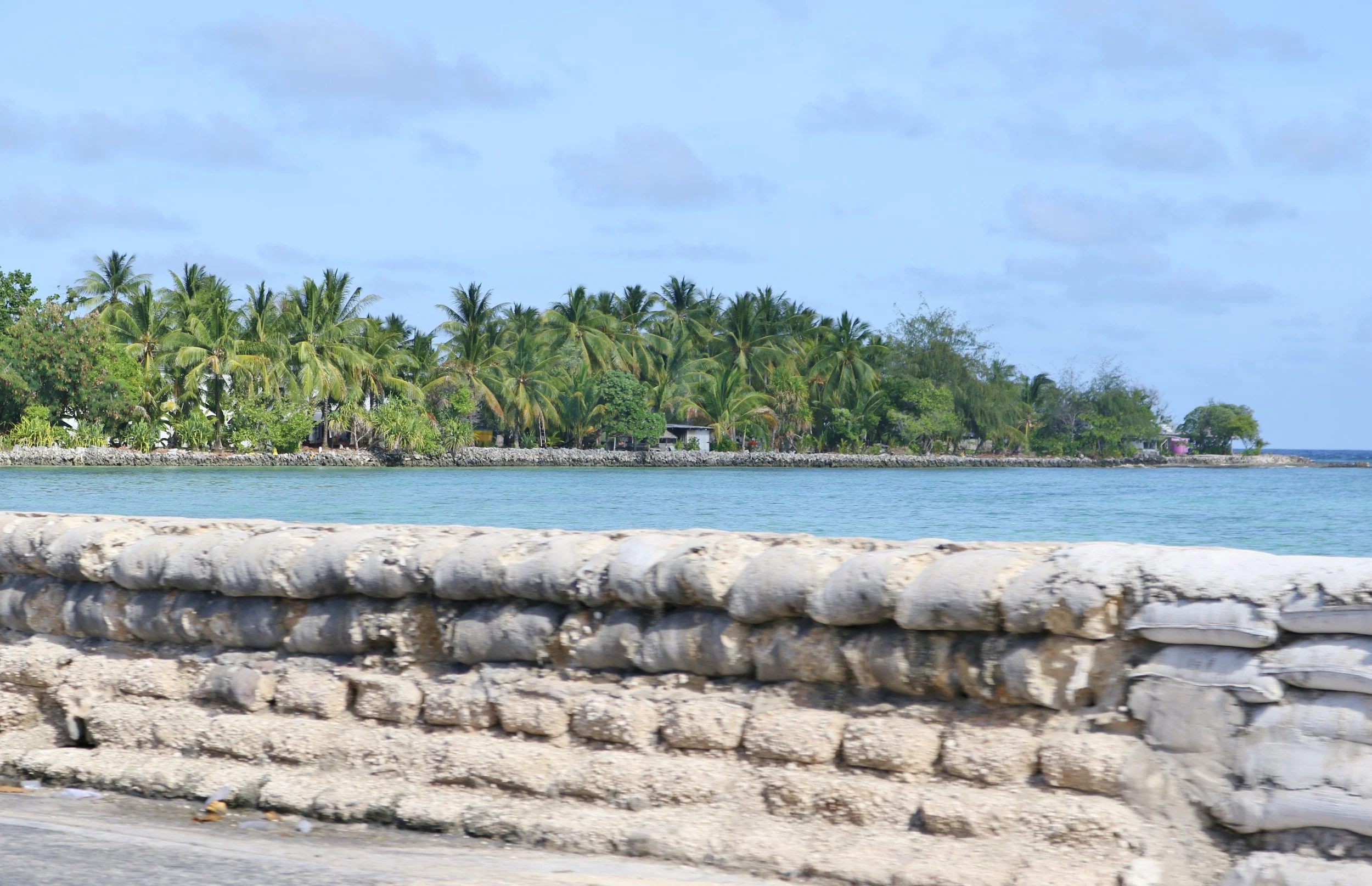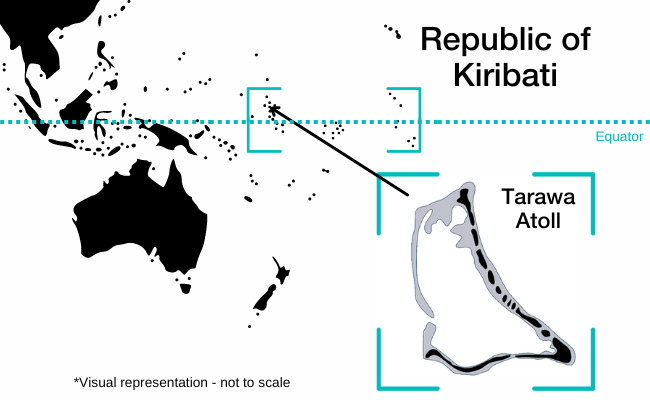
Kiribati & Culture
The Republic of Kiribati (pronounced ki-ree-bas) is made up of 33 low lying islands and coral atolls in the South Pacific. Kiribati occupies around 3.5 million km² of ocean and is located in the ‘four corners’ of the world, spanning across the Equator and the International Dateline. Kiribati has a population of 110,000. Approximately 35% of them are of Primary School Age and below (reference Kiribati population and housing consensus, 2015). This demographic in particular will play a key role in addressing the impacts of climate change in the future.
Kiribati is currently facing drastic consequences of rising sea levels as a result of climate change. Villages are flooding with high tide, and many homes have had to move back from the shore to be rebuilt on higher ground. Scientists predict that Kiribati may have only decades before the entire island nation is forced into displacement due to rising sea levels.
Some quick facts:
The highest point on Tarawa (main island in Kiribati) is just 3m above sea level
Due to its geographical location on the equator, the nation sits around 28°C all year and is humid all year round
The main vegetation is coconut trees of which the Kiribati people use for food, medicine, craft, shelter, and building materials
Photo: Students from St Joseph’s College in Abaiang, Kiribati, in traditional dress. HATS 2018.
Kiribati people are friendly, persevering and hospitable. They go out of their way to help others and are focused on living happily in the present.
As Katrina Tai, an i-Kiribati woman living in Australia describes them, Kiribati people are “Very kind, friendly, generous…anything that you think is good, that is the Kiribati people. Life to them… they are happy. They never think about life being bad or horrible. They just go on with their happy life, like you know, they don’t care about what is coming tomorrow. Today is a very special day for them and when they wake up again, another very special day for them”.
Family is a core part of a Kiribati person’s life, culture, and self-identity. Daily activities and special occasions revolve around family. In Kiribati family life, everyone contributes to the household. Kiribati families are often larger than in the western world. Often in Kiribati, members of the extended family live under one roof. It is common for siblings, nieces, cousins, aunts, grandparents and so on to live together.
Kiribati people live off the land and sea. Coconut, fish and rice are the main staples of their diet. They enjoy gathering with their family to eat and spend time together.
Dance and song are a large part of Kiribati culture. They use dance and song as a way to share stories and pass them down through the generations. Every dance tells a story. Every person either sings or dances. If you are not dancing, you are expected to sing and clap. You’ll notice a majority of the dances and songs are traditional but some of the young people are also embracing new styles of music and dance. Song and dance bring Kiribati people closer and add to their rich and beautiful culture.

HATS recognises that Kiribati and islands in the South Pacific are currently facing drastic consequences as a result of Climate Change, threatening their survival on the islands.


